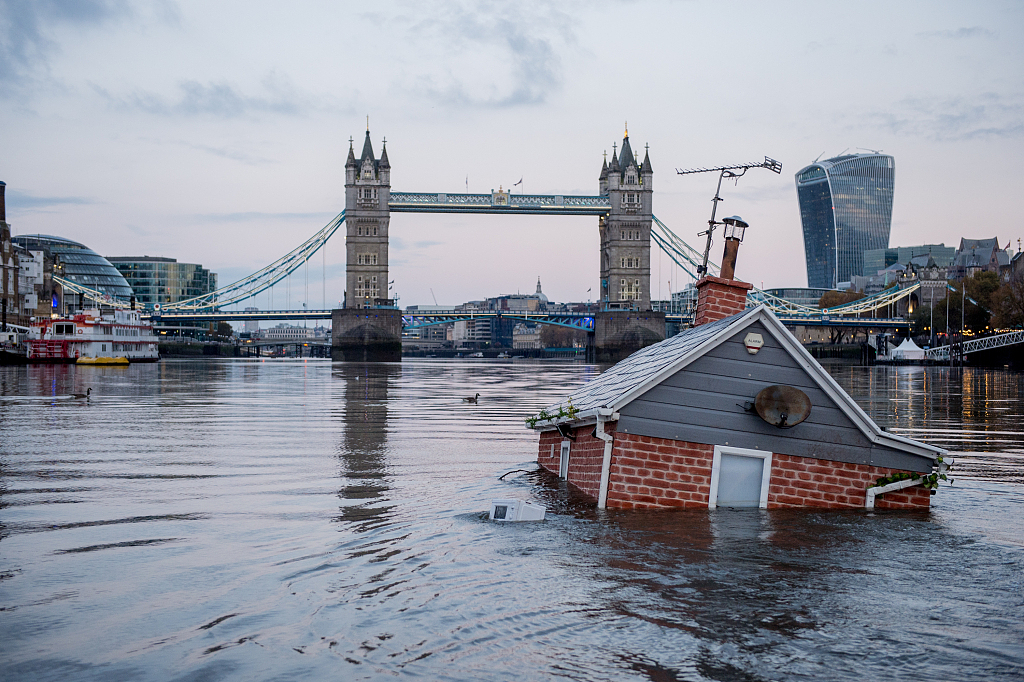A surprise drop in coal use in the United States and Europe has helped to slow the growth of global carbon dioxide emissions this year, with softening demand in China and India also contributing, according to a study published on Wednesday.
The report, launched at a U.N. climate summit in Madrid, showed that growing appetite for oil and gas meant the world was still far from achieving the drastic reductions in greenhouse gas emissions needed to avert catastrophic global warming.
Nevertheless, coal use fell sharply in the United States and Europe, helping slow the projected growth in carbon dioxide emissions to 0.6 percent in 2019 compared with 2.1 percent the previous year.
Slower growth in demand in China, which burns half the world's coal, and India, combined with overall weaker economic growth, also helped slow the upward march of emissions, said the report, known as the Global Carbon Budget 2019.

A combination picture shows the Aletsch Glacier as it was in 1865 (top), seen from Belalp, Switzerland, and on September 3, 2019 (bottom). The picture shows the glacier is drastically narrowing and retreating. /VCG Photo
A combination picture shows the Aletsch Glacier as it was in 1865 (top), seen from Belalp, Switzerland, and on September 3, 2019 (bottom). The picture shows the glacier is drastically narrowing and retreating. /VCG Photo
"The weak growth in carbon dioxide emissions in 2019 is due to an unexpected decline in global coal use, but this drop is insufficient to overcome the robust growth in natural gas and oil consumption," said Glen Peters, research director at Oslo-based climate research center CICERO.
Peters added that global CO2 emissions from fossil fuels were likely to be more than 4 percent higher in 2019 than in 2015, the year when the Paris Agreement to tackle climate change was adopted.
Published by the Global Carbon Project research group in several academic journals, including Nature Climate Change, the report represents the first full-year estimate of the increase in carbon dioxide emissions in 2019.
The authors said that recent growth in renewable energy and electric vehicles had served – at best – to merely slow the growth in fossil fuel emissions, which must fall rapidly if the world is to meet temperature goals in the Paris accord.

Environmental protest group Extinction Rebellion floats a replica of a British house on the river Thames in front of Tower Bridge in an action entitled "Our House Is Flooding," London, England, November 10, 2019. /VCG Photo
Environmental protest group Extinction Rebellion floats a replica of a British house on the river Thames in front of Tower Bridge in an action entitled "Our House Is Flooding," London, England, November 10, 2019. /VCG Photo
The study also estimated that emissions from forest fires and other land-use changes rose in 2019 to 6 billion metric tons of CO2, about 0.8 billion metric tons more than the previous year, driven partly by fires in the Amazon and Indonesia.
Joeri Rogelj, a lecturer in climate change at the Grantham Institute, Imperial College London, downplayed the long-term significance of annual fluctuations in emissions growth.
"The small slowdown this year is really nothing to be overly enthusiastic about," Rogelj said. "If no structural change underlies this slowdown than science tells us that emissions will simply gradually continue to increase on average."
(Cover photo via VCG; Edited by An Qi)
(If you want to contribute and have specific expertise, please contact us at nature@cgtn.com)
Source(s): Reuters